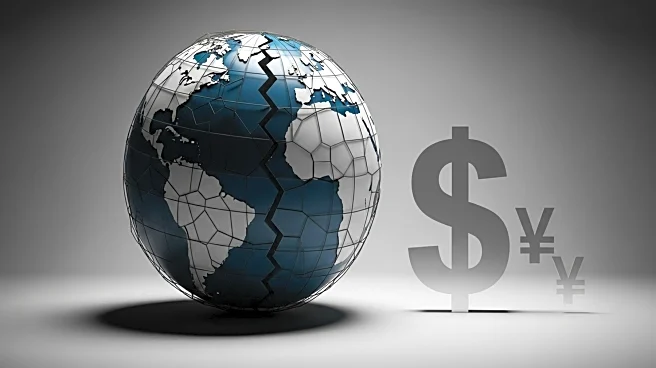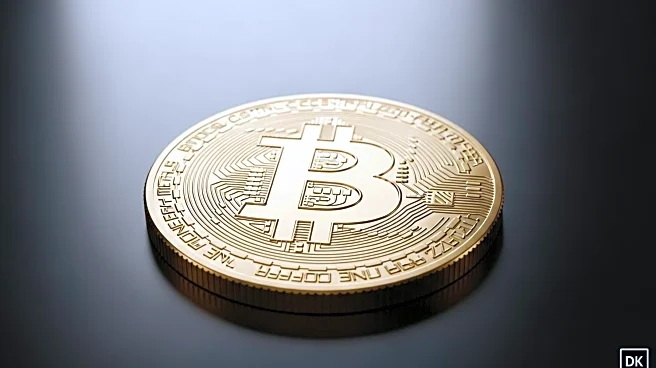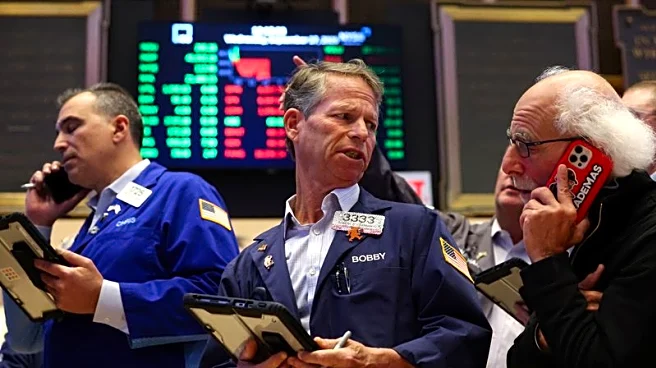What's Happening?
Gold prices have reached unprecedented levels, topping $4,000 per ounce for the first time, following President Trump's announcement of a 100% tariff on China and restrictions on U.S. software exports. This move has led to significant market volatility, with stocks experiencing their worst loss since April during Trump's trade war. The dollar has weakened, while gold has increased by 1.5%, reinforcing its status as a safe haven asset amid growing investor concerns about the U.S. economy. Market analyst Ed Yardeni predicts that gold could reach $5,000 per ounce by 2026 and potentially $10,000 by the end of the decade, driven by factors such as inflation hedging, central banks' de-dollarization, and geopolitical tensions.
Why It's Important?
The surge in gold prices highlights the growing economic uncertainty and investor skepticism towards the U.S. dollar. As gold is traditionally seen as a hedge against inflation, its rising value suggests concerns about the U.S. economic outlook, particularly in light of President Trump's aggressive trade policies. The tariffs on China could exacerbate trade tensions, impacting global supply chains and potentially leading to higher consumer prices. Additionally, the Federal Reserve's recent shift towards rate cuts, amid a stagnating labor market, adds to inflation worries, further driving the demand for gold and other safe haven assets.
What's Next?
The economic landscape may face further volatility as stakeholders react to President Trump's tariff announcement. Investors will likely continue to seek refuge in gold and other non-dollar assets, while businesses may need to navigate increased costs and supply chain disruptions. The Federal Reserve's monetary policy decisions will be closely watched, as further rate cuts could influence inflation and economic growth. Additionally, geopolitical developments and fiscal sustainability concerns will play a crucial role in shaping market dynamics and investor sentiment.
Beyond the Headlines
The implications of President Trump's tariffs extend beyond immediate market reactions, potentially affecting long-term economic and geopolitical stability. The move may accelerate the trend of de-dollarization among central banks, as countries seek to reduce reliance on the U.S. dollar in international trade. This shift could alter global financial systems and influence currency valuations. Furthermore, the tariffs may impact U.S.-China relations, with potential repercussions for international diplomacy and trade agreements.











